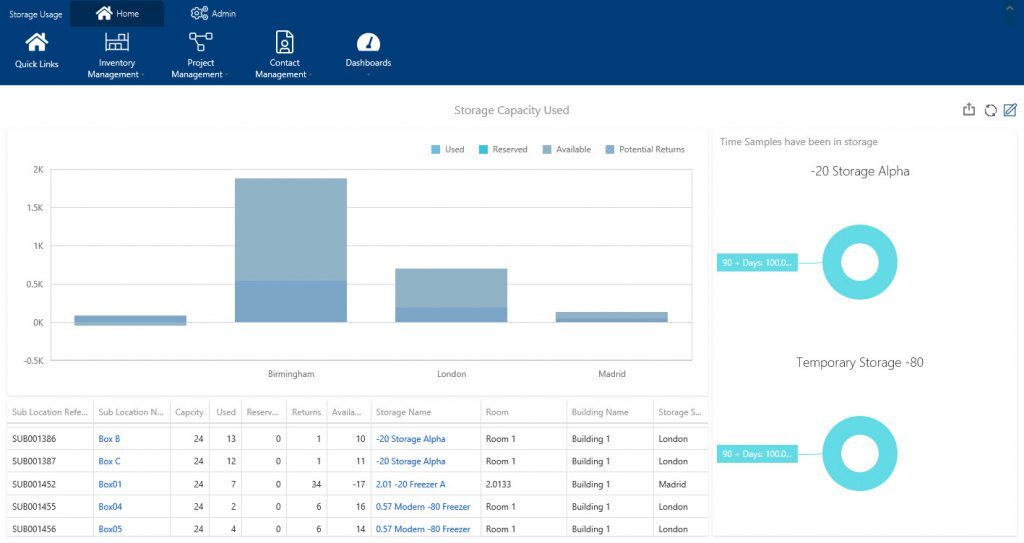Collecting lab data can seem like a laborious administrative job. It can be perceived as taking up your team’s precious time. Your team, whose time could be better spent carrying out valuable research instead of typing in notes. However, if you are a data driven-business, your laboratory sample data is not just something to be collected, never to be viewed again. Instead, you understand the value of information and how it can be used inform decision-making.
The value of laboratory sample management software
When thinking about time spent on data capture, you often overlook the time spent on information retrieval.
You can create spreadsheets, write post-it notes and notes scribbled on pieces of paper easily. However, using them is another matter. Trying to find your laboratory samples easily or identify what is in a lab freezer or vial can be difficult when manually searching random pieces of paper. Moreover, if the post-it note comes unstuck from the freezer during an inspection – things do not look good.
Laboratory Sample Management software can help you quickly and easily capture and organise your data. Consequently, making it much easier to retrieve and use the information. Mandatory prompts, bulk data import and automated data capture capabilities within the software speed up and simplify entry of information.
Comprehensive laboratory sample management software, such as Achiever Medical, provides a suite of graphical, interactive dashboards as standard. In addition, it provides the tools to create your own or amend the standard dashboards. Further, you can also incorporate data from external data sources including databases and spreadsheets.
From data to insight
However, turning isolated pieces of information into useful insight can be difficult. This is not simply about displaying a pie-chart with colourful segments containing counts of samples by sample type.
Reviewing your objectives and key performance indicators will help you identify the type of information you want to assess. You can examine whether you are capturing the information required to monitor these which is critical. If you are not capturing this data and are never going to be able to, then you probably should re-evaluate your goals.
Some key analytics and statistics to display on graphical, interactive dashboards and reports to deliver insight could include:
- Highlighting trends such as comparing this month’s figures versus last month
- Presenting the types of samples that are most frequently used and/or requested
- Identifying the clinical trial visits where most participants drop out/stop attending
- Tracking average time taken from sample accessioning to storage, shipping and/or processing
- Displaying the samples that have been in storage for over x months
The screenshot below shows Achiever Medical’s “Storage Capacity Used” dashboard that indicates the samples that have been in storage for long periods of time.

Using the information presented you can make informed decisions such as:
- the types of samples to source and/or procure
- the quality of the samples that have been in sat in storage for a long-period of time
- the critical communication points in a clinical trial where you may need to encourage participants to continue with the trial
- changes to your standard operating procedures (SOPs) or resources based on any potential bottlenecks in time taken to fulfil activities
- identifying compliance issues early to allow remedial action to be taken swiftly
- Encouraging your laboratory to change the status quo and implement a laboratory sample management system
With tight budgets, stretched resources and increased time required for ticking boxes for compliance, it may seem impossible to consider implementing new software. It may appear easier to continue as you are.
However, this can be very much a false economy, as continuing as you are could be costing you more money than you think.
Implementing flexible, laboratory sample management software, like Achiever Medical, allows your team to take advantage of in-built best practice workflows and comprehensive data validation capabilities. Further, systems like Achiever Medical do not take years to implement, unlike some traditional laboratory information management systems. In addition, systems like Achiever Medical are designed to be user-friendly and work with your team’s processes and requirements.
They also allow you to take control of your data quality and integrity, ensuring your data is not just collected but structured to enable detailed bioinformatics and analysis.
By using your information to help inform your decisions you could save money, improve efficiency, optimise your use of your resources and obtain better results.
So, why would you want to stick with the status quo?

Comments are closed.